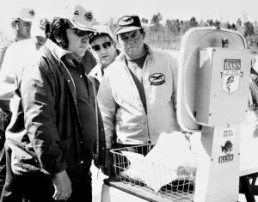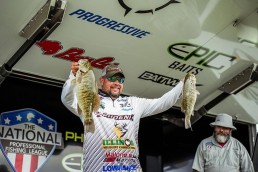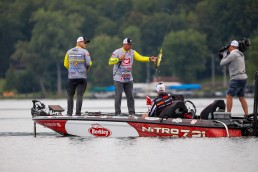Throwback Thursday – FLIPPIN’: A CONCEPT. NOT JUST A TECHNIQUE – PART ONE
By Terry Battisti – Bass Fishing Archives
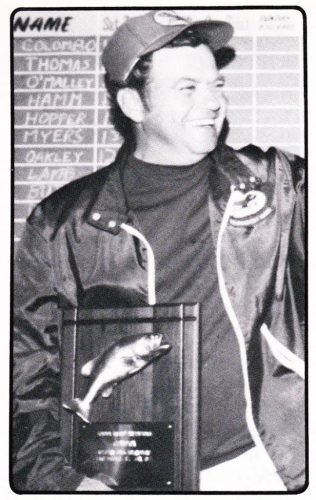
Although the first responses to Flippin’ weren’t too positive, it didn’t take long for anglers to realize its effectiveness. The technique was winning nearly all of the early tournaments in the West and even though anglers hated this form of “tule dippin’,” what they didn’t realize was this form of fishing was way more than just a technique.
Yes, Flippin’ is a technique in which to catch bass but, more so, it was a complete lure-presentation concept. The concept, once fully embraced, allowed the angler the utmost in lure control and speed.
In contemporary bass fishing, the phrase ‘power fishing’ means to cover a lot of water quickly, effectively, without any waste of motion while keeping the lure in the bass’ strike zone for the longest period of time. Flipping, and nowadays pitching, defines this better than any other form of bass fishing.
“Flipping embraces three basic concepts,” Dave Myers said. “First, there are always some fish in shallow water, second, most shallow fish are biting fish, and third, the key to getting these shallow fish to bite is a precision presentation.
“But there’s more to the concept than just flipping a lure out to cover,” he added. “It was a lot of other things put together. The fact that the anglers made Dee fish a shorter rod helped a tremendous amount in the development of this concept.
“Dee found that by using the short flip, he could fish the visible targets along with any other unseen targets between the bank and the boat and his lure was always in the strike zone. He could completely pick apart a shoreline in less than half the time it would take an angler fishing by conventional casting methods. There was no wasted portion of his cast.
“Not only that, he was always in position to have total control over a fish should it strike. The anglers that complained about his long rod, which eventually led to him to fish a shorter rod, actually helped in the development of the concept and technique.”
After Thomas and Myers concluded the development of the first Flippin’ Stik, Myers convinced Thomas to take his concept national. Off they went to the 1975 Bassmaster Toledo Bend Invitational.

Upon getting to the lake, Thomas was completely overcome by the amount of visible cover. It didn’t look like anything he’d ever seen in his native California. He went out the first day and tried flipping everything and it didn’t work out. The next day he went back to conventional methods but by that time, he was out of the race. The effectiveness of the Flippin’ rod and concept didn’t even get noticed. The second Bassmaster event of Thomas’ career, though, wouldn’t go unnoticed.
In April of that same year, Thomas and Myers traveled to Bull Shoals, AR for the second Invitational on the Bassmaster schedule. Bull Shoals, unlike Toledo Bend, resembled the California waters he was so accustomed to. It had steep banks, clear water, and a lot of visible cover. Not only that, a severe cold front had moved through the area right before the start of the event. All of these variables coupled together set up an event that would play directly into Thomas’ strength.
Thomas went out and in three days put together a combined sack that weighed nearly 10 pounds more than second-place angler Tommy Martin’s catch. What’s even more amazing is out of the 175 anglers in competition, 100 blanked the first day. Thomas weighed in 16 bass (10 bass per day was the limit back then) for a total of 35-06 and Martin weighed in 12 bass for 25-10. Thomas clearly ran away with the event.
At this point, Harold Sharp and Ray Scott had a situation on their hands. Anglers were complaining of the method in which Thomas had won and Sharp and Scott had to do something fast.
“Harold [Sharp] and Ray [Scott] came and asked me to tell them about this technique,” Myers recalled. “All the big guns were all complaining and they needed to get ahead of it. So we explained the method to them, how it differed from tule dippin’, and that the technique was based on the accurate presentation of a jig using a long rod. We told them about the 7’ 6” length restriction we’d instilled in the west and they thought about it. After that, they decided that the western restriction was good and then they went with an 8-foot restriction after that.”
Sharp has a little different recollection of what happened.
“The first we were aware of Dee was when he entered the Bull Shoals tournament in April 1975,” Sharp recalled. “Because Dee won this event with a new style of tournament fishing, it made much more impact than if he had just finished in the money – it was new and different and a winner.
“B.A.S.S. had no rules on the length of the rod,” he said. “In fact, at the time we had a contestant that fished with a standard fly rod with a spincast reel attached to the butt end loaded with mono line. He did very well with it and used it to fish plastic worms without a weight. At that time, our rules stated that only casting, spinning or spincasting equipment could be used, but his rig was more spincasting than flyfishing so we let him use it.
“Although Dee introduced the long rod in April, ’75, B.A.S.S. didn’t change rules mid-season,” Sharp said. “But we could see where it could create a problem as most angling in those days was done several yards from the target and Flippin’ moved the boat up on the target, which handicapped one angler, unless both were Flippin’.
“We also saw a problem with the use of longer rods so as to outreach your partner,” Sharp said. “So we took a long look at Flippin’ and decided to install the 8-foot rod rule the following year [Jan 1976]. We didn’t see that an 8-foot rule would stop or hurt Flippin’ and we always promoted new stuff. Our concern was to keep tournament fishing equal to all contestants, so we installed the length limit to keep everyone in the boat on an equal basis. We hadn’t heard of the restriction on the west coast, we made our decision on what we thought best for BASS events and keep the BASS rules equal for all contestants.”
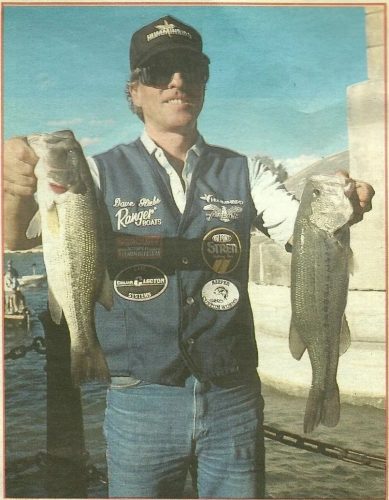
Thomas ended up finishing high enough that year to qualify for the 1975 Bass Masters Classic held on the Currituck Sound in North Carolina, where he finished in 9th place.
In 1976, Thomas took western stick Dave Gliebe back east with him but unfortunately, neither did well enough to qualify for the 1976 Bass Master Classic. That year Thomas stopped fishing the Bass Masters circuit in order to stay closer to home but Gliebe would continue to fish through 1979, making three consecutive Classics (1977-79), namely on the Flippin’ technique.
In the next installment of this feature, Basil Bacon, Hank Parker and Denny Brauer talk about how flippin’ changed the face of tournament angling.
If we’ve piqued your interest and you’d like to read ahead, check out the rest of the story at Bass Fishing Archives with the links below:
